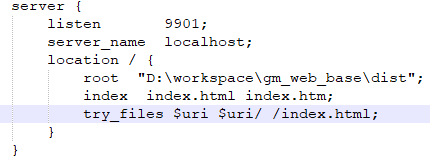可以将文章内容翻译成中文,广告屏蔽插件可能会导致该功能失效(如失效,请关闭广告屏蔽插件后再试):
问题:
R's duplicated returns a vector showing whether each element of a vector or data frame is a duplicate of an element with a smaller subscript. So if rows 3, 4, and 5 of a 5-row data frame are the same, duplicated will give me the vector
FALSE, FALSE, FALSE, TRUE, TRUE
But in this case I actually want to get
FALSE, FALSE, TRUE, TRUE, TRUE
that is, I want to know whether a row is duplicated by a row with a larger subscript too.
回答1:
duplicated has a fromLast argument. The "Example" section of ?duplicated shows you how to use it. Just call duplicated twice, once with fromLast=FALSE and once with fromLast=TRUE and take the rows where either are TRUE.
Some late Edit:
You didn't provide a reproducible example, so here's an illustration kindly contributed by @jbaums
vec <- c("a", "b", "c","c","c")
vec[duplicated(vec) | duplicated(vec, fromLast=TRUE)]
## [1] "c" "c" "c"
回答2:
You need to assemble the set of duplicated values, apply unique, and then test with %in%. As always, a sample problem will make this process come alive.
> vec <- c("a", "b", "c","c","c")
> vec[ duplicated(vec)]
[1] "c" "c"
> unique(vec[ duplicated(vec)])
[1] "c"
> vec %in% unique(vec[ duplicated(vec)])
[1] FALSE FALSE TRUE TRUE TRUE
回答3:
I've had the same question, and if I'm not mistaken, this is also an answer.
vec[col %in% vec[duplicated(vec$col),]$col]
Dunno which one is faster, though, the dataset I'm currently using isn't big enough to make tests which produce significant time gaps.
回答4:
Duplicated rows in a dataframe could be obtained with dplyr by doing
df = bind_rows(iris, head(iris, 20)) # build some test data
df %>% group_by_all() %>% filter(n()>1) %>% ungroup()
To exclude certain columns group_by_at(vars(-var1, -var2)) could be used instead to group the data.
If the row indices and not just the data is actually needed, you could add them first as in:
df %>% add_rownames %>% group_by_at(vars(-rowname)) %>% filter(n()>1) %>% pull(rowname)
回答5:
If you are interested in which rows are duplicated for certain columns you can use a plyr approach:
ddply(df, .(col1, col2), function(df) if(nrow(df) > 1) df else c())
Adding a count variable with dplyr:
df %>% add_count(col1, col2) %>% filter(n > 1) # data frame
df %>% add_count(col1, col2) %>% select(n) > 1 # logical vector
For duplicate rows (considering all columns):
df %>% group_by_all %>% add_tally %>% ungroup %>% filter(n > 1)
df %>% group_by_all %>% add_tally %>% ungroup %>% select(n) > 1
The benefit of these approaches is that you can specify how many duplicates as a cutoff.


